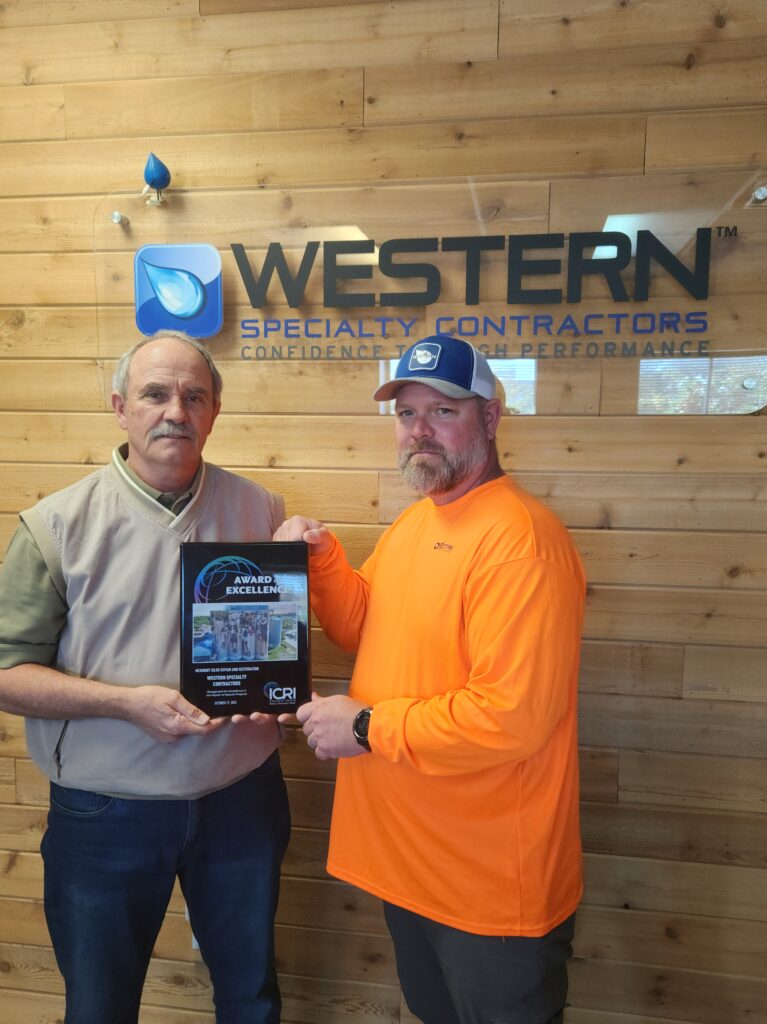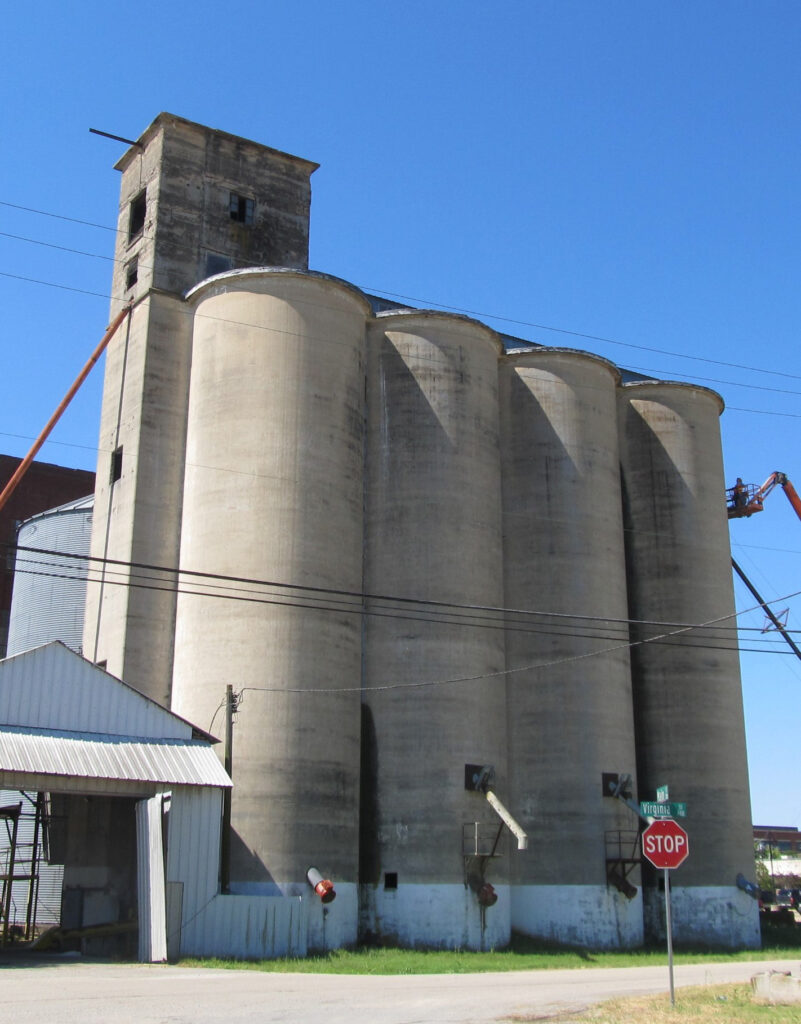
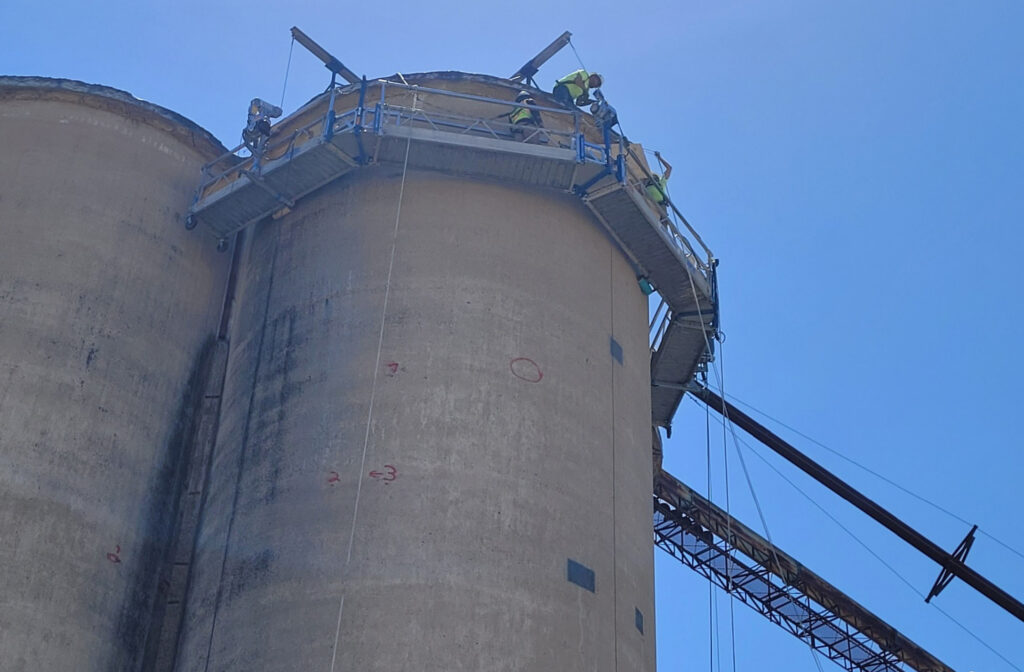
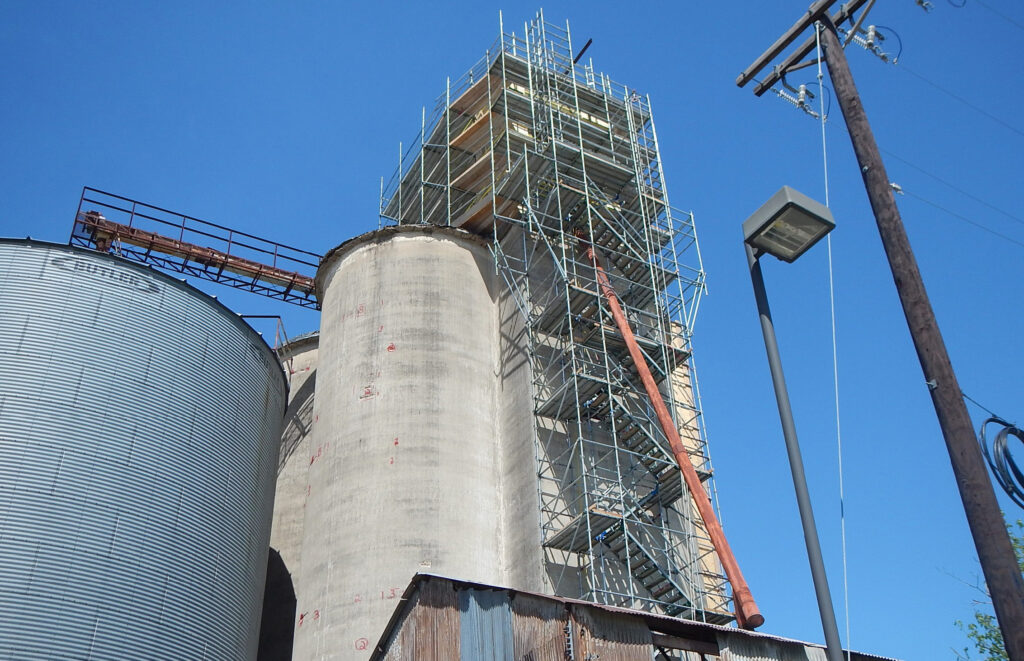
Western Specialty Contractors’ Dallas, TX Branch proudly announces it has received a 2023 International Concrete Repair Institute (ICRI) Award of Excellence in the Special Projects Category for its repair/restoration of historic silos in McKinney, TX, that would become the canvas for internationally-acclaimed Australian artist Guido van Helten’s US silo series, “Monuments.” McKinney’s silo mural features painted images of local business owners, gatherings and neighbors that honor the city’s culture and past. Van Helten’s public art installations can also be seen in Minnesota, Iowa, Kansas and Arkansas.
Western’s branch representatives received the award on October 17 during the ICRI 2023 Fall Convention in St. Pete Beach, FL. Additionally, Western’s Charlotte, NC Branch was also honored at the ceremony with an Award of Merit in the Special Projects Category for its tower modernization work at Bon Secours St. Francis Downtown Hospital in Greenville, SC.
ICRI conducts an awards program each year to honor and recognize outstanding projects in the concrete repair industry. Entries are received worldwide, and the winning projects are honored each year at the annual ICRI Awards Banquet at each ICRI Fall Convention.
“This was such a large scale and important restoration project, not only for the artist but for the entire City of McKinney,” said Western Branch Manager Austin DeJohn. “We knew going into this project that these silos were not only a part of the town’s history, but they would also become the canvas for an unbelievable mural that would attract visitors from around the country. Our work would not only need to stand the test of time to preserve this historic structure, but it would also need to be restored in a way that the mural’s integrity would be protected as well. It was truly an amazing project, and we were happy to have been a part of it, and we thank the ICRI for recognizing our efforts.”
The McKinney project consisted of eight interconnected silos constructed circa 1927 as part of the Collin County Mill & Elevator Company. The mill closed in the 1970s, and the silos sat vacant for decades. The structures contributed to the mill, which was placed on the National Register of Historic Places in 1987. As part of the ongoing redevelopment of McKinney’s historic downtown, city officials desired to restore the silos to serve as a landmark and backdrop to their adjacent, new municipal complex.
Each silo is approximately 20 feet in diameter, 80 feet high and made of cast-in-place, 7-inch thick conventionally reinforced concrete walls and concrete roof slabs covered with built-up asphalt material.
The silos also featured a two-story, rectangular concrete structure, called a “doghouse,” that extended above the top of the two easternmost silos and was connected to a steel-frame structure with sheet metal siding and a roof that was centered over the remaining six silos.
Numerous cracks, delaminations and spalls were observed in the silos’ exterior walls, mainly caused by insufficient concrete cover over horizontal steel straps used for reinforcement. The cantilevered edges of the silo roofs were observed to be in poor condition, with numerous areas of spalled concrete and exposed, corroded reinforcing steel. The exterior concrete walls of the doghouse were in very poor condition, with extensive areas of spalled concrete and exposed, corroded reinforcing steel. The existing steel windows in the exterior walls were severely corroded, and there were many visible signs of freeze-thaw damage to the 6-8-inch-thick concrete walls. A steel frame had previously been installed to brace the deteriorating concrete walls and frame.
Based on the observations, testing and the intended future use of the silos by the City of McKinney, Western was contracted to perform the following scope of work:
Supply issues and the unforeseen difficulties encountered during the demolition of the doghouse structure compressed the construction schedule. The main objective was to complete the north and west elevations first to ensure the artist started on time. Once the north and west face of the silos were completed, work continued on the roof and the rest of the silos while the artist was installing the mural. The mural was started in June 2022 and completed in August.
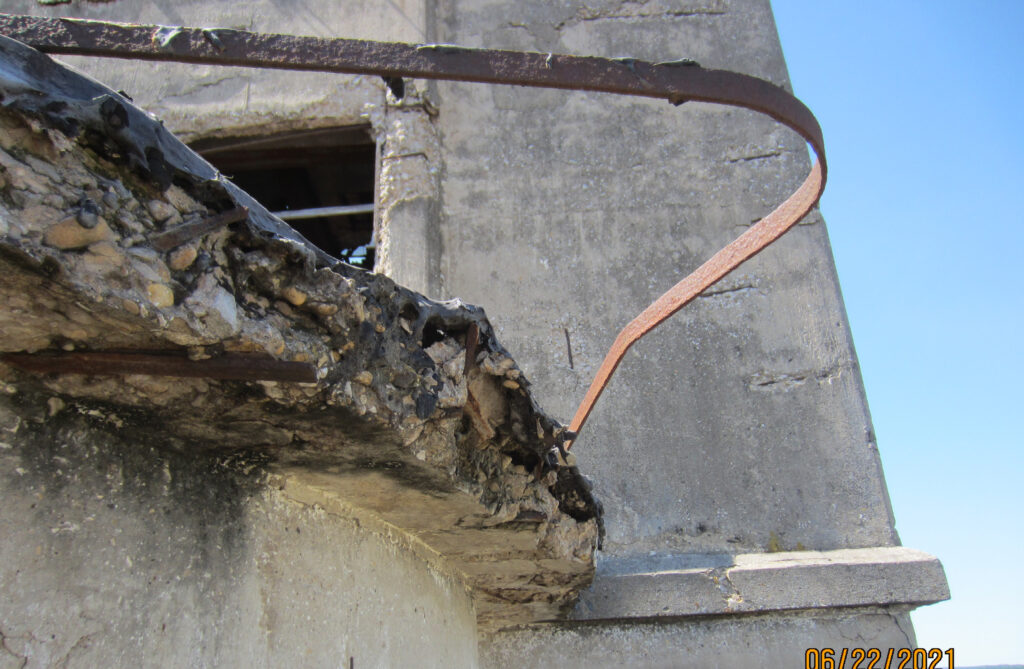
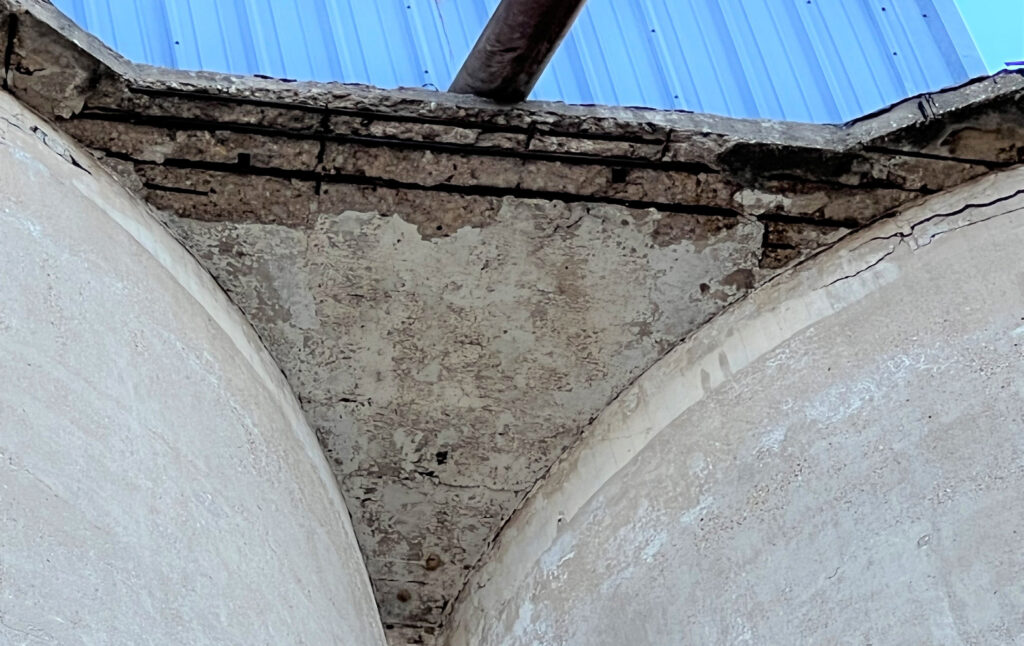
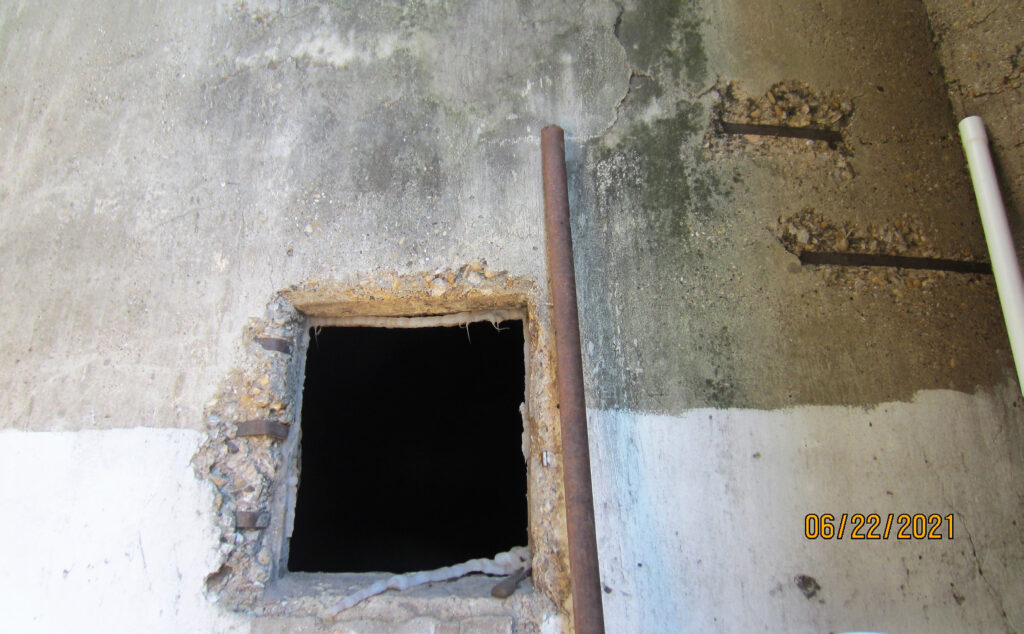
About Western Specialty Contractors
Family-owned and operated for more than 100 years, Western Specialty Contractors is the nation’s largest specialty contractor in masonry and concrete restoration, waterproofing, and specialty roofing. Western offers a nationwide network of expertise that building owners, engineers, architects, and property managers can count on to develop cost-effective, corrective measures that can add years of useful life to a variety of structures, including industrial, commercial, healthcare, historic, educational and government buildings, parking structures, and sports stadiums. Western is headquartered in St. Louis, MO, with 30 branch offices nationwide and employs more than 1,200 salaried and hourly professionals who offer the best, time-tested techniques and innovative technology. For more information about Western Specialty Contractors, visit https://westernspecialtycontractors.com.

